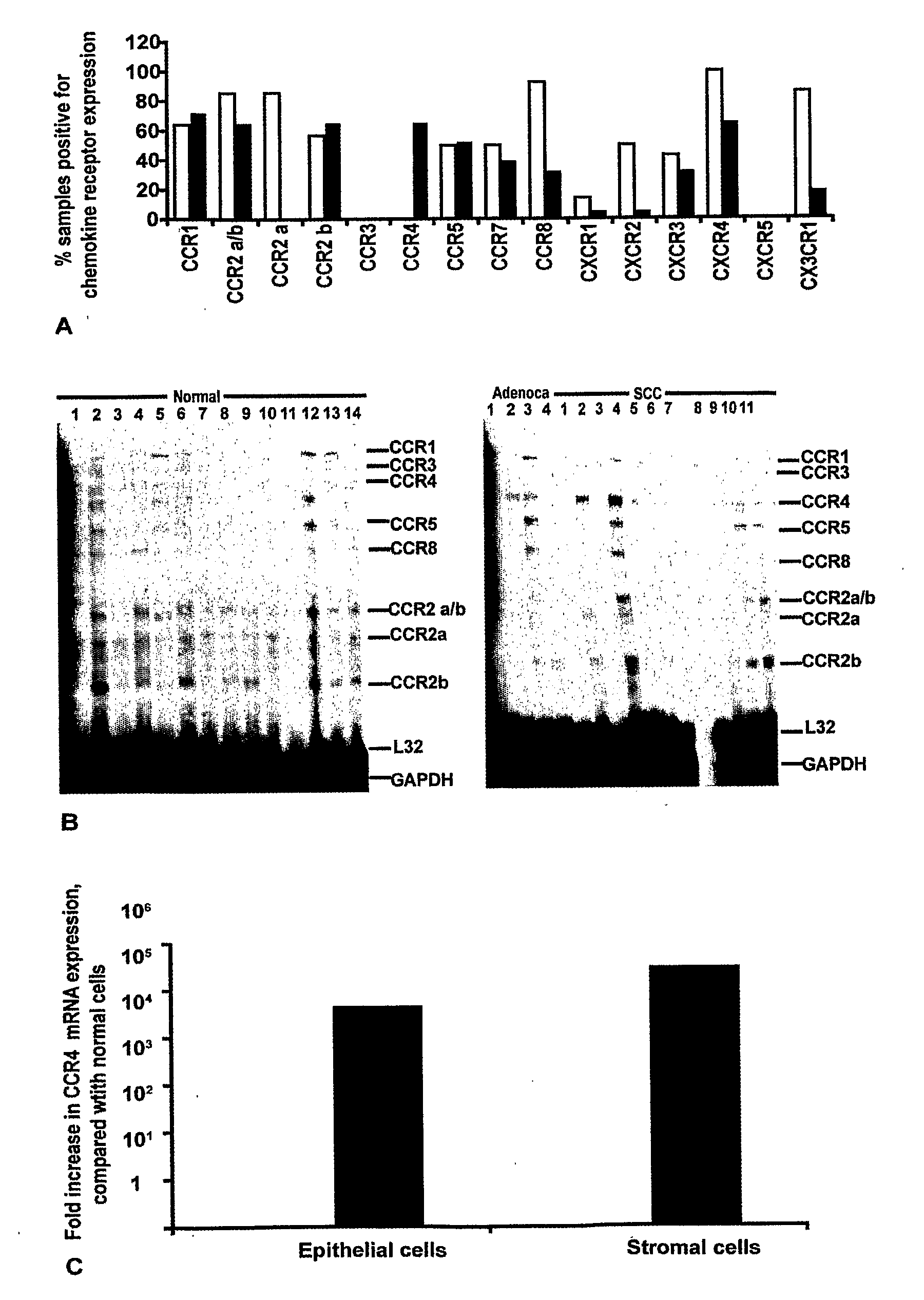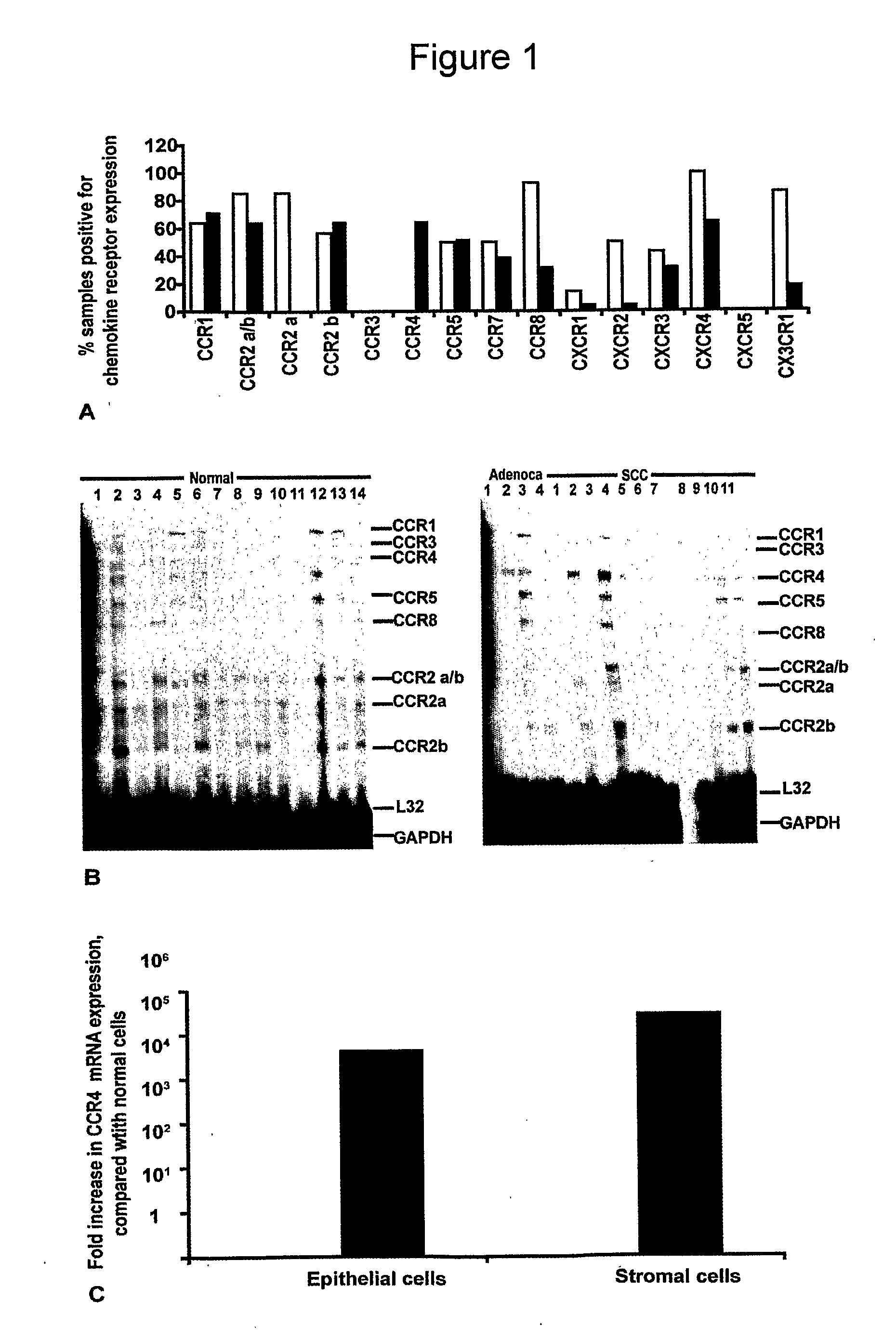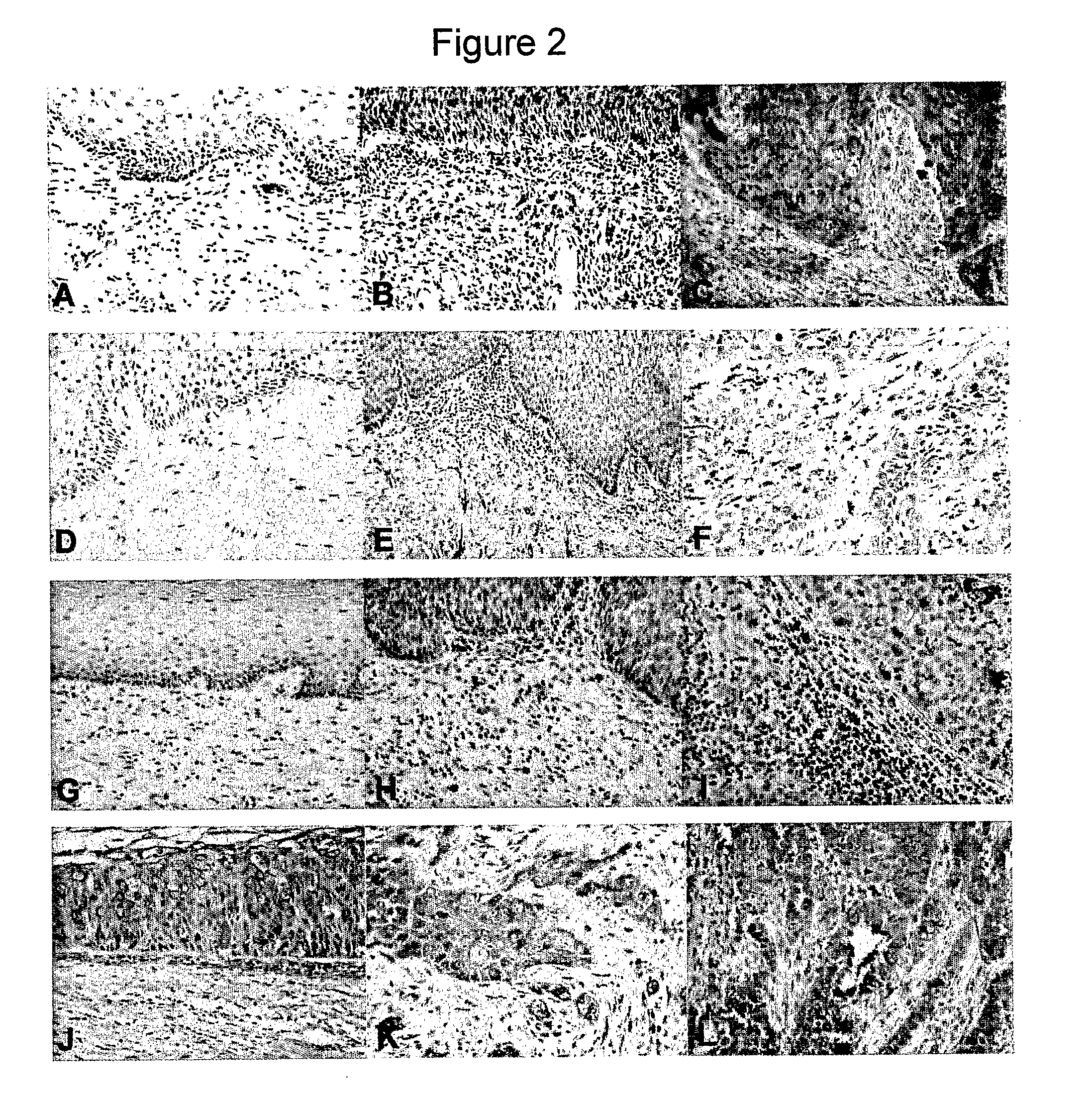Cancer Marker and Therapeutic Target
a cancer marker and therapeutic target technology, applied in the field of cancer markers and therapeutic targets, can solve the problems of reducing the survival rate of patients, improper treatment, and large number of false positives, and achieve the effects of improving the survival rate, enhancing the specificity, and altering the stability of the targ
- Summary
- Abstract
- Description
- Claims
- Application Information
AI Technical Summary
Benefits of technology
Problems solved by technology
Method used
Image
Examples
examples
Cervical Tissue Samples and Oesophageal Specimens
[0254]For the mRNA studies, fifteen tumour biopsies from patients with cervical cancer (11 squamous cell carcinoma, S1-S11, and 4 adenocarcinomas, A1-A4) and 14 samples of non-neoplastic cervical tissue (N1-N14) were obtained during surgery and snap-frozen in liquid nitrogen. Diagnosis was made by the pathology department of Barts and The London NHS Trust. Patient samples were divided according to the FIGO classification (stage I, II, III, IV) and tumour biopsies were classified according to increasing grade of nuclear atypia (1, 2, 3) or as well, moderately, or poor differentiation.
[0255]For immunohistochemistry, paraffin embedded samples (n=166) from 150 different patients were obtained from Barts and The London NHS Trust and the Clinical Centre of Serbia, Belgrade. Access to fresh and paraffin-embedded human samples satisfied the requirements of the East London and City Health Authority Research Ethics Subcommittee (LREC no. T / 02 / 0...
experiment 1
Protection Assay for Chemokine Receptors
[0265]Ribonuclease protection assays (RPA) were used to screen for 13 chemokine receptor mRNAs in fresh-frozen biopsies of human cervical tissue. As can be seen from the summary graph in FIG. 1A, a range of chemokine receptor mRNAs was found in cervical tissue extracts with some discrete differences between the non-neoplastic and the malignant biopsies. Of particular interest was the chemokine receptor CCR4, which was present in the malignant cervix but not in extracts from non-neoplastic cervical biopsies (FIG. 1B).
[0266]As chemokine receptor expression was examined on whole tissue extracts containing a mixed population of stromal cells and epithelial cells, we next investigated the cellular source of the CCR4 mRNA. mRNA was extracted from laser microdissected stromal and epithelial cell areas of normal and malignant cervical biopsies, and semi-quantitative Real Time RT-PCR was used to analyse CCR4 expression with 18S rRNA as a control. As sh...
experiment 2
is Found on Infiltrating Leucocytes in Human Cervical Biopsies.
[0268]As shown in FIG. 2 (A-C), leucocytes in the stromal areas of the biopsies stained positive for CCR4. The IHC score for CCR4 positivity in the stromal areas is summarised in FIG. 3A (white bars). The non-neoplastic tissues were negative for CCR4 leucocytes (FIGS. 2A, 3A). There were more CCR4 expressing stromal cells in the CIN samples (FIG. 2 B, 3A) and this increased further in the invasive neoplastic cervical samples (FIG. 2 C, 3A). The intensity of CCR4 expression on the infiltrating leucocytes also increased with malignant progression. In non-neoplastic tissues this was mild; intensity was moderate to strong in CIN and adenocarcinomas, and intensity was strong in invasive SCC, recurrent tumours and lymph node metastases (FIG. 8).
[0269]The stroma consists of various cell types, and tests were carried out to ascertain which of the infiltrating cells contributed to CCR4 expression. As macrophages and Treg cells ex...
PUM
| Property | Measurement | Unit |
|---|---|---|
| amino-acid sequence | aaaaa | aaaaa |
| size | aaaaa | aaaaa |
| frequency | aaaaa | aaaaa |
Abstract
Description
Claims
Application Information
 Login to View More
Login to View More - R&D
- Intellectual Property
- Life Sciences
- Materials
- Tech Scout
- Unparalleled Data Quality
- Higher Quality Content
- 60% Fewer Hallucinations
Browse by: Latest US Patents, China's latest patents, Technical Efficacy Thesaurus, Application Domain, Technology Topic, Popular Technical Reports.
© 2025 PatSnap. All rights reserved.Legal|Privacy policy|Modern Slavery Act Transparency Statement|Sitemap|About US| Contact US: help@patsnap.com



